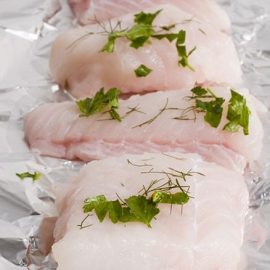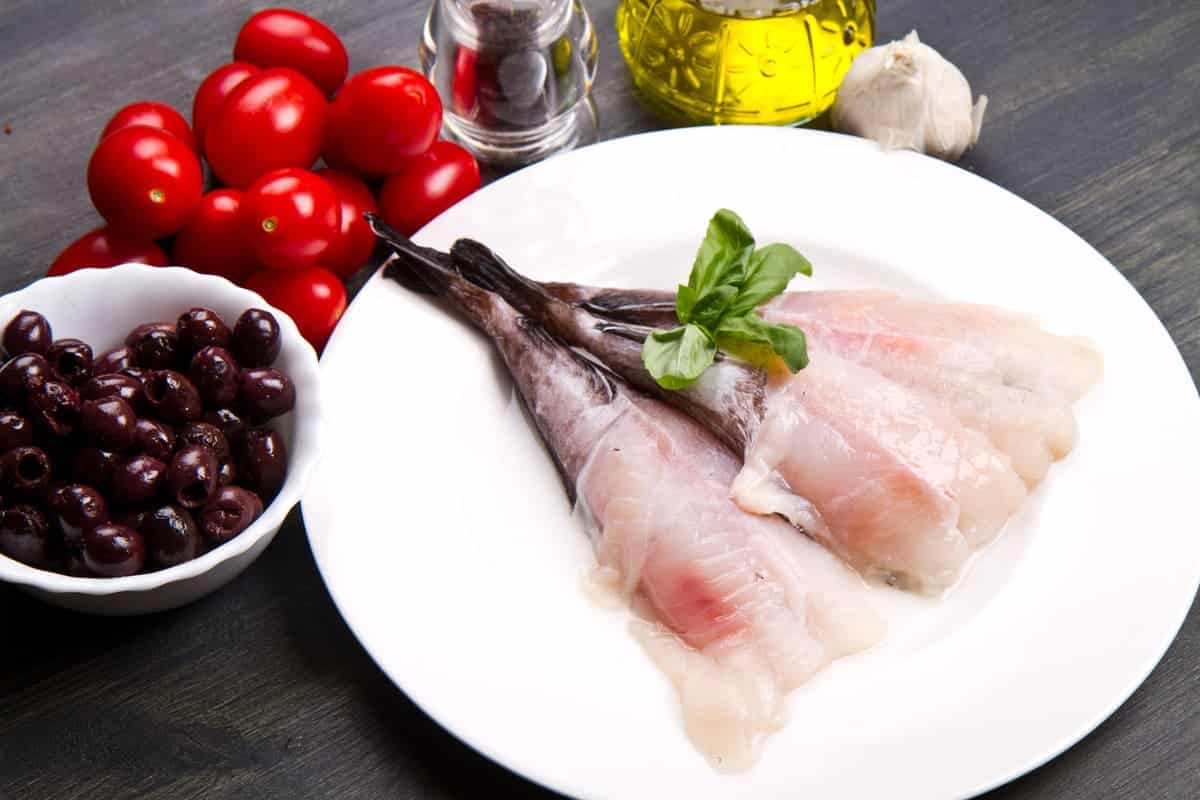
Introduction
Monkfish is a large gamefish found in tropical and temperate waters worldwide. Often referred to as ‘poor man’s lobster’, monkfish is a prized delicacy due to its firm, dense texture and delicate flavour, which lends itself well to various cooking methods.
Fish like this are appreciated for their savoury taste and unique texture, more similar to those of shrimp than fish. Its special character compares to white fish such as halibut, cod, and haddock, and its mild flavour lends itself to almost any cooking method.
Description
Monkfish is a large-bodied, deep-sea anglerfish found in the North Atlantic Ocean and the Mediterranean Sea. It is a member of the Lophiidae family and is known for its flat head, large eyes, and large lower jaw filled with small, sharp teeth. They can be found in depths up to 1,500 feet in the ocean, mainly along the North American coast.
They have an unmistakable physical appearance, with long, flattened bodies and flat, broad heads. Their colouration ranges from brown to grey with pale brindles, spots and stripes.
They have one very long, pointed spine on the back of their head, a dorsal fin that runs the entire length of their body and four pairs of extended pectoral fins. They also have two long barbels extending from the lower jaw and a single long filament protruding from the back of the pectoral fins.
Monkfish usually grow between 3-4 feet in length and weigh up to 40 pounds. They typically live for about 15 years.
Habitat
Monkfish prefer muddy and sandy ocean bottoms at depths between 50-300 meters, although they can live at depths of up to 750 m (2,500 ft). The British Isles, Iceland, and the Azores are the primary locations where monkfish reside, although they are noted to be an especially abundant species in the Bay of Biscay.
This fish species are also found in the shallow depths of the Mediterranean Sea, the North Atlantic Ocean, and the English Channel.
Commercial and Recreational Fishing
Monkfish are a commercially important species. Its meat is highly sought after in many markets and is used for several menu items, such as soups, stews, and chowders. In addition to its commercial value, it is heavily targeted by recreational fisheries.
Size and Threats
Monkfish can grow very large, with a maximum recorded weight of up to 13 kg (28lb). Despite their intimidating size, monkfish are generally harmless and not considered a threat to humans.
However, their commercial fishing industry has threatened their population, prompting some major fishing countries to implement regulations such as quotas, the Maximum Sustainable Yield (MSY) system, and local conservation efforts like The Cornwall Seaweed Partnership.
Conservation Status
Due to the monkfish’s consumption of commercially harvested species, their numbers are closely monitored by both fishermen and conservationists. Fisheries must adhere to a range of regulations to ensure that monkfish can continue to feed and reproduce without jeopardising the health and sustainability of other nearby species.
Sustainable Fishing Practices
Fishing quotas, size restrictions, and closed seasons have been established to protect monkfish. Fishing quotas limit the amount of monkfish which can be taken to prevent overfishing and ensure the sustainability of their populations.
Size restrictions, which vary depending on the different fishing grounds, require that only adult monkfish can be taken. Closed seasons, typically from April to August, forbid fishing altogether to allow the monkfish to reproduce.
These precautionary steps help to reduce mortality and ensure that monkfish populations remain healthy. Monkfish are also sustainable fish, as they have a slow growth rate and late maturity and are typically caught using trap fishing methods, which minimises bycatch.
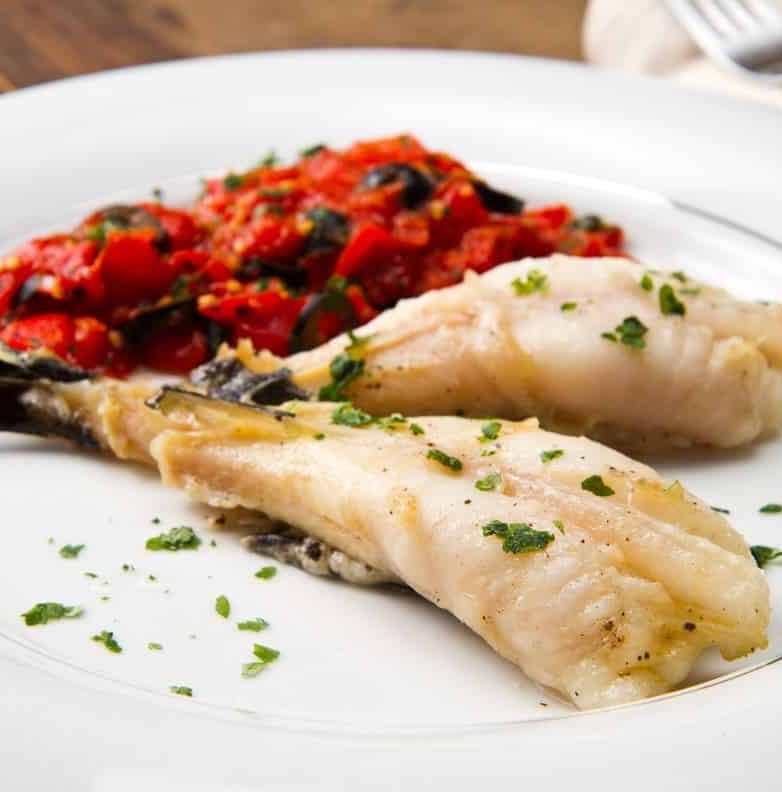
Life Cycle of Monkfish
Monkfish spawn in coastal waters. Peak spawning times vary with latitude and temperature, typically occurring during the summer months in the northern parts of the range, and later in the year in the southern regions.
They can lay up to 1.5 million eggs simultaneously, with optimum spawn locations between 300 and 500 meters. The eggs typically hatch within two weeks of being laid. Juvenile Monkfish are pelagic before settling on the continental shelf as adults.
During spawning, the males stay at deeper depths while the females remain closer to the surface. Monkfish are solitary, only coming together to mate.
Etymology
The term ‘monkfish’ has been used since at least the 15th century to refer to this fish species. It is believed to be derived from the Middle English monkfisch, with monk referring to a monk’s habit and fisch meaning fish in Germanic languages, possibly about the resemblance of the monkfish’s head to a monk’s hood. Among its other names are American angler and goosefish.
Monkfish’s Diet and Feeding Habits
The monkfish’s diet is incredibly varied and opportunistic, reflecting their adaptability. They feed mainly on smaller fish, crustaceans and aquatic invertebrates, such as herring, hake, cod, flounder, shrimp, crab, and squid.
They have been known to consume other fish species, such as jellyfish and sharpnose skates, which can make up a significant portion of their diet. In addition to actively hunting, monkfish are often seen laying in wait for their prey, using their large mouths and strong jaws to ambush them.
Uses
The mild flavor and dense texture make monkfish popular for many seafood dishes, from soup to sushi. It is also a valuable target for sports fishermen, as its size and fierce fighting abilities make it a thrilling catch.
Popularity and Availability
Monkfish can be found in fishmongers and well-stocked supermarkets. The fish is versatile and sustainable and pleasant to eat and cook with.
Nutritional Values
Monkfish is a very lean fish, containing an average of only 60 to 100 calories per 100g serving. It is an excellent source of protein, providing 23.5g per 3-ounce serving and a good source of essential fatty acids, including omega-3s.
Monkfish is also rich in essential vitamins and minerals, including vitamin B12, selenium, phosphorus, iron, zinc, iodine, magnesium, and calcium.
Health Benefits
Monkfish is considered a healthier option than much other fish. It is low in calories, fat and saturated fat but high in protein, vitamins, minerals and dietary fibre. Monkfish is significantly lower in mercury than salmon and tuna and is lower in dietary cholesterol than shellfish such as calamari and shrimp. Additionally, monkfish is rich in healthy omega-3 fatty acids, making it an overall nutritious option.
Monkfish has long been associated with the health benefits of traditional Chinese medicine, which claims that it can reduce inflammation, improve digestion and positively affect cardiovascular health, making it an attractive choice for those looking for a nutritious seafood option.
Versatility
Seafood lovers enjoy its versatility and wide range of applications due to its mild flavour and firm texture.
Monkfish Taste and Texture
Monkfish has an unusually mild and sweet flavor reminiscent of lobster. The flesh of monkfish is mild and firm, with a delicate flavour similar to lobster. The taste of monkfish is often described as sweet, mild, and buttery and is often compared to a lovely buttery flavour. Monkfish has a firm, meaty texture and may become slightly chewy when cooked.
Culinary Significance
Monkfish are highly sought after due to their delicious, firm flesh. This species is often eaten as a seafood delicacy, commonly consumed in Europe and certain parts of North America. Ensuring monkfish sustainability through proper regulation and conservation efforts is imperative to sustaining their population and preparing for the future.
Produced in several forms, such as boiling, grilling, and roasting, monkfish fishing practices have evolved over the centuries to include modern trawling and gill netting, making it possible to obtain catches of increased size.
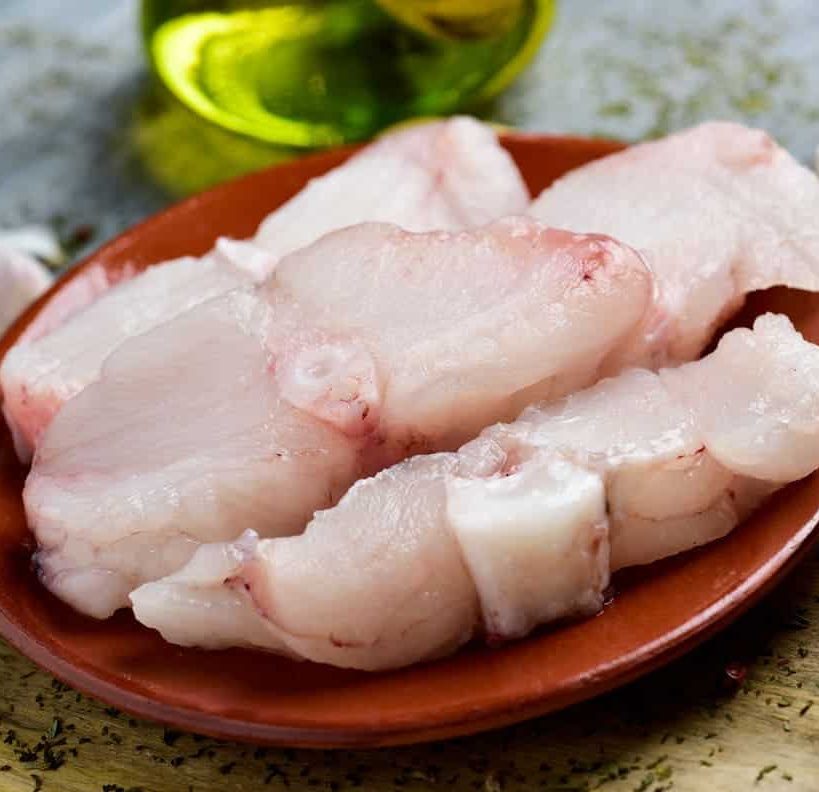
Preparing Monkfish
When preparing monkfish, the crucial first step is to remove the dark tissue underneath the skin, as it has a strong flavour and can be bitter. It is also important to note that the skin should be removed before cooking, as it can become tough and chewy.
To fillet monkfish, start by cutting down through the spine until the fillet comes away from the rib cage. The skin can then be easily peeled off the fillet. In many cases, there is just one central bone on the tail that can easily be avoided in preparation and eating.
Cooking Methods
Monkfish can be cooked in several ways: poaching, steaming, pan-frying, deep-frying, grilling, sauteing, braising, boiling, and baking.
To prevent the flesh from becoming tough, it is important to not cook monkfish for more than 10 minutes for steaming, five minutes for boiling and pan frying, and ensure that the internal temperature of the fish is at least 145 degrees Fahrenheit.
When steamed, poached, or boil monkfish tail or fillets, or those wrapped in parma ham, it is often served with a complementary sauce such as lemon butter, hollandaise, or pesto.
When frying, the Monkfish fillets should be coated with bread crumbs mixed with herbs and spices before being cooked in a pan lightly coated with an extra virgin olive oil.
When grilling or barbequing, the monkfish should be mixed with oil, garlic, herbs, and lemon juice before cooking.
When baking monkfish, it should be lightly seasoned with salt and pepper and wrapped in either foil or parchment paper. Once the fish is cooked, it should be placed in an oven preheated to 350-400 degrees Fahrenheit for about 20 minutes.
Monkfish is also well-suited for making fish cakes and patties and filling soups and stews with other types of seafood.
Serving Monkfish
When serving monkfish, do not let it overcook, as the dense flesh can become dry and tougher. It is also important to remember to season monkfish sparingly, as its delicate flavour can be quickly overshadowed.
Monkfish is an excellent choice for a fish dinner, with a firm texture and delicate flavour. With careful preparation and cooking, monkfish can make a delicious and healthy meal.
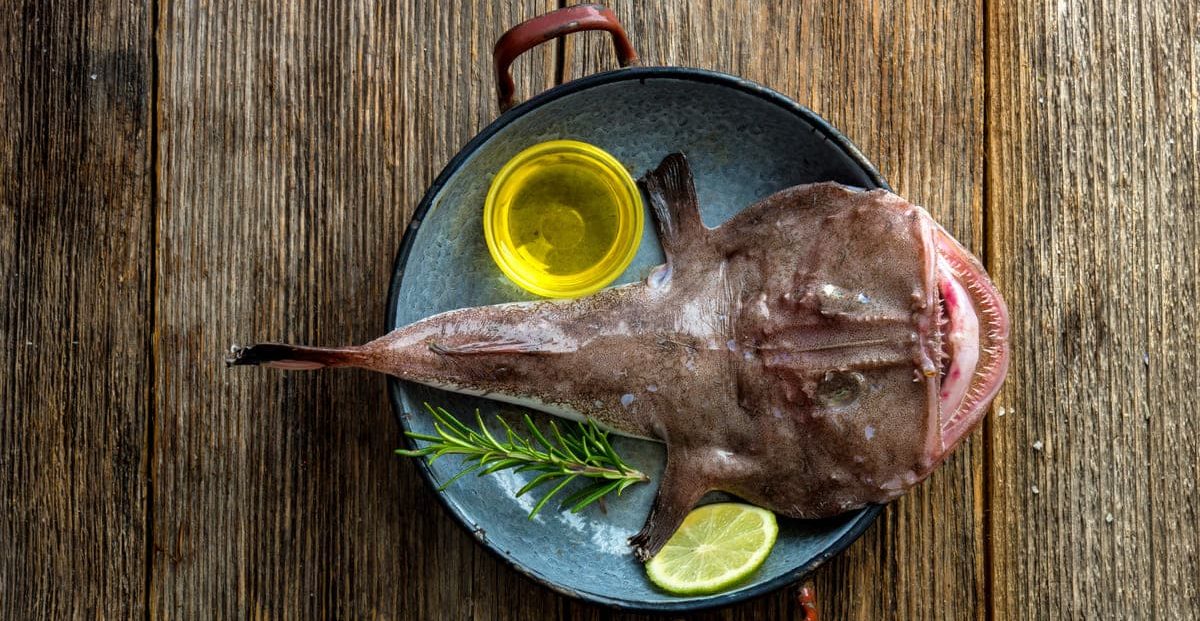
Flavorful Pairings
When cooking monkfish, it is important to choose ingredients that will bring out its luscious flavour. Garlic, herbs, citrus fruits and chilli peppers are all complimentary accompaniments, while mushrooms, tomatoes, spinach, olives, artichokes, capers, parsley, and butter all pair exceptionally well with monkfish.
Pungent flavours create interesting contrast, such as anchovies, hot sauce, and mustard which can add a spicy note to the dish. Furthermore, sauces such as tomato or puttanesca sauce can balance the flavours and provide additional depth and texture.
Popular Recipes
Monkfish can be cooked and prepared in different ways and is often used in popular dishes such as Monkfish Piccata, Monkfish Curry, Pan Fried Monkfish, Monkfish Scampi, and Monkfish Stew. Ingredients for classic monkfish dishes may include garlic, onions, capers, tomatoes, white wine, parsley, lemon, butter, spices, and herbs.
Popular recipes for monkfish also include lemon-garlic monkfish, monkfish fillet with garlic butter, monkfish stew, and much more.
Conclusion
Monkfish is a profoundly versatile and sustainable fish found in the Atlantic Ocean. It can be cooked in multiple ways and has become popular in restaurants and households. To ensure the preservation of monkfish, practices such as sustainable fishing must be encouraged and employed. Monkfish is an important fish species, and thanks to its unique flavour and versatility, it will remain a staple in many diets.
